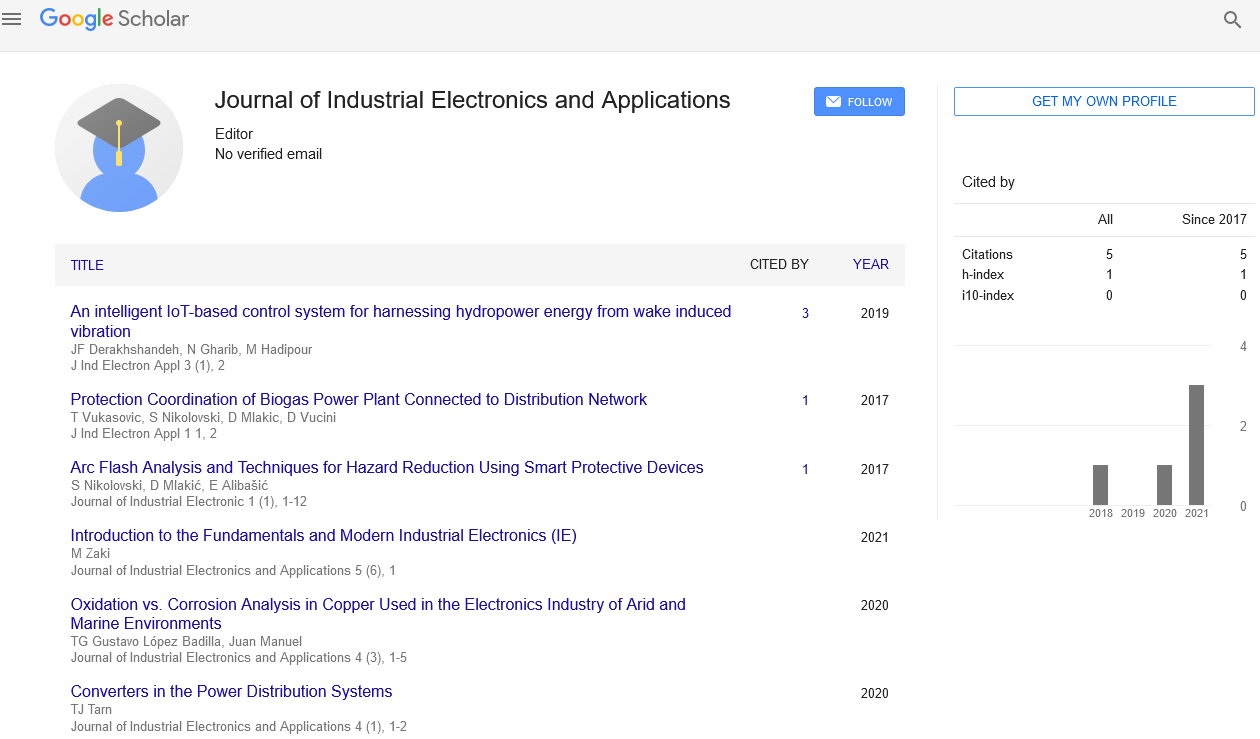Perspective, J Ind Electron Appl Vol: 7 Issue: 4
Advanced Welding Robotics: Technical Insights and Applications
Henein Rijkers*
1Department of Interdisciplinary Engineering, University of Sheffield, Sheffield, United Kingdom
*Corresponding Author: Henein Rijkers,
Department of Interdisciplinary
Engineering, University of Sheffield, Sheffield, United Kingdom
E-mail: heneinraij1@sheffield.ac.uk
Received date: 01 November, 2023, Manuscript No. JIEA-23-124003;
Editor assigned date: 03 November, 2023, PreQC No. JIEA-23-124003 (PQ);
Reviewed date: 20 November, 2023, QC No. JIEA-23-124003;
Revised date: 27 November, 2023, Manuscript No. JIEA-23-124003 (R);
Published date: 04 December, 2023, DOI: 10.36648/JIEA.1000044
Citation: Rijkers H (2023) Advanced Welding Robotics: Technical Insights and Applications. J Ind Electron Appl 7:4.
Abstract
In the realm of manufacturing and fabrication, robotic welding stands as a technological marvel, bringing efficiency, precision, and consistency to the welding process. The robotic welding framework represents a sophisticated integration of robotics, automation, and advanced welding technologies.
Description
In the realm of manufacturing and fabrication, robotic welding stands as a technological marvel, bringing efficiency, precision, and consistency to the welding process. The robotic welding framework represents a sophisticated integration of robotics, automation, and advanced welding technologies. This article explain the intricate world of robotic welding, exploring its framework, applications, and the transformative impact it has on industries ranging from automotive to aerospace.
The framework of robotic welding
At the heart of robotic welding is the robotic arm, a multifaceted limb capable of precise and programmable movements. Equipped with end-effectors, these arms hold welding torches or other tools needed for the welding process. The versatility of robotic arms allows for intricate weld patterns and access to complex joints. Advanced sensors and vision systems play a crucial role in the robotic welding framework. These sensors enable real-time monitoring of the welding environment, providing feedback on variables such as joint position, material thickness, and arc quality. Vision systems contribute to seam tracking, ensuring accuracy even in dynamic conditions. Robotic welding relies on sophisticated programming to guide the robotic arm through the desired welding path. Control systems, often integrated with Human-Machine Interfaces (HMIs), allow operators to input welding parameters, monitor the process, and make adjustments as needed. The precision achieved through programming ensures consistent weld quality.
Applications across industries
Robotic welding has become a cornerstone in automotive manufacturing, facilitating the assembly of vehicle frames, chassis, and body components. The speed and precision of robotic welding contribute to increased production rates while maintaining highquality welds crucial for vehicle safety and durability. In the aerospace industry, where precision is paramount, robotic welding plays a crucial role in joining lightweight materials like aluminium and titanium. The framework's ability to maintain tight tolerances and produce highstrength welds aligns with the stringent requirements of aerospace applications. Robotic welding finds applications in the construction of ships and marine structures. The framework's ability to navigate through large and complex structures contributes to the efficiency of welding processes in shipyards, enhancing both speed and quality.
Advantages of robotic welding framework
Robotic welding eliminates the variability associated with manual welding. The framework ensures that each weld is executed with precision, leading to consistent quality and structural integrity in the finished product. The speed at which robotic welding operates significantly enhances productivity in manufacturing processes. Robots can work continuously without fatigue, contributing to a more efficient and streamlined production line. While the initial investment in robotic welding systems can be significant, the long-term cost efficiency is notable. Reduced labour costs, minimized material waste, and increased throughput contribute to a favourable return on investment over time. Robotic welding improves workplace safety by removing human operators from hazardous environments. Robots can handle tasks in environments with high temperatures, fumes, or confined spaces, minimizing the risk of injuries.
Future trends and developments
The integration of collaborative robots into the welding framework is gaining traction. Co-bots (Collaborative Robots) can work alongside human operators, offering flexibility and adaptability in welding tasks that require a combination of human expertise and robotic precision. The incorporation of artificial intelligence and machine learning algorithms holds the potential to enhance robotic welding capabilities. These technologies can optimize welding parameters, predict potential defects, and adapt the welding process based on real-time data.Conclusion
The robotic welding framework stands as a testament to the marriage of robotics and welding technologies, revolutionizing the manufacturing landscape. From automotive giants to aerospace pioneers, industries are embracing this framework for its ability to deliver consistent, high-quality welds with unmatched efficiency. As technology continues to advance, the future of robotic welding holds the promise of even greater precision, adaptability, and integration into diverse manufacturing processes.
 Spanish
Spanish  Chinese
Chinese  Russian
Russian  German
German  French
French  Japanese
Japanese  Portuguese
Portuguese  Hindi
Hindi 